Mars InSight Photos: A Timeline to Landing on the Red Planet
Marian milestone
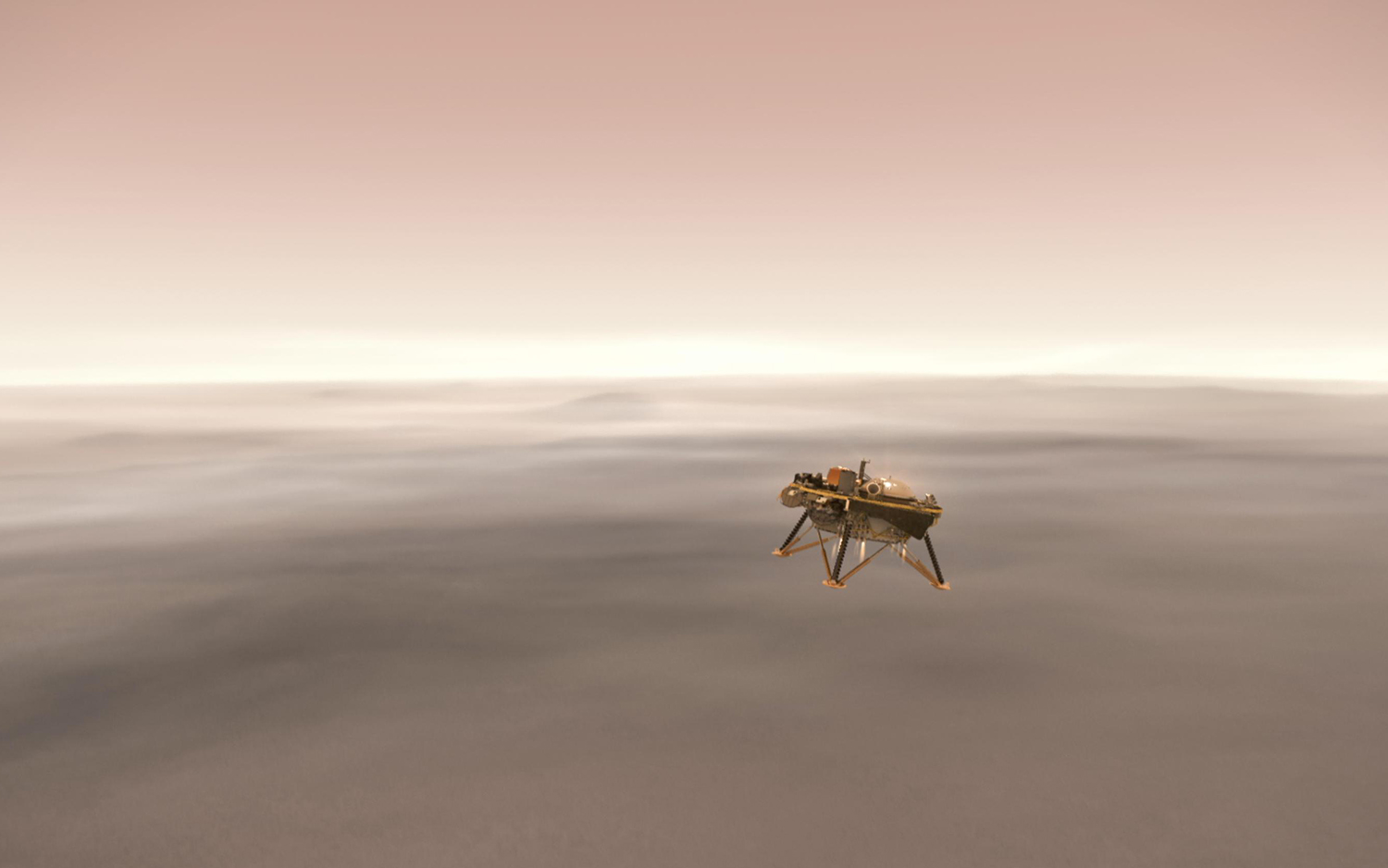
Mars InSight (short for Interior Exploration using Seismic Investigations, Geodesy and Heat Transport) is set to land on Mars and give the Red Planet its first "thorough checkup" in 4.5 billion years, when the fourth rock from the sun formed. The lander, a three-legged geologist, is scheduled to land (after a six-month journey) on Mars on Nov. 26, 2018. Here's a look at how it got there and what to expect next.
Lander assembly
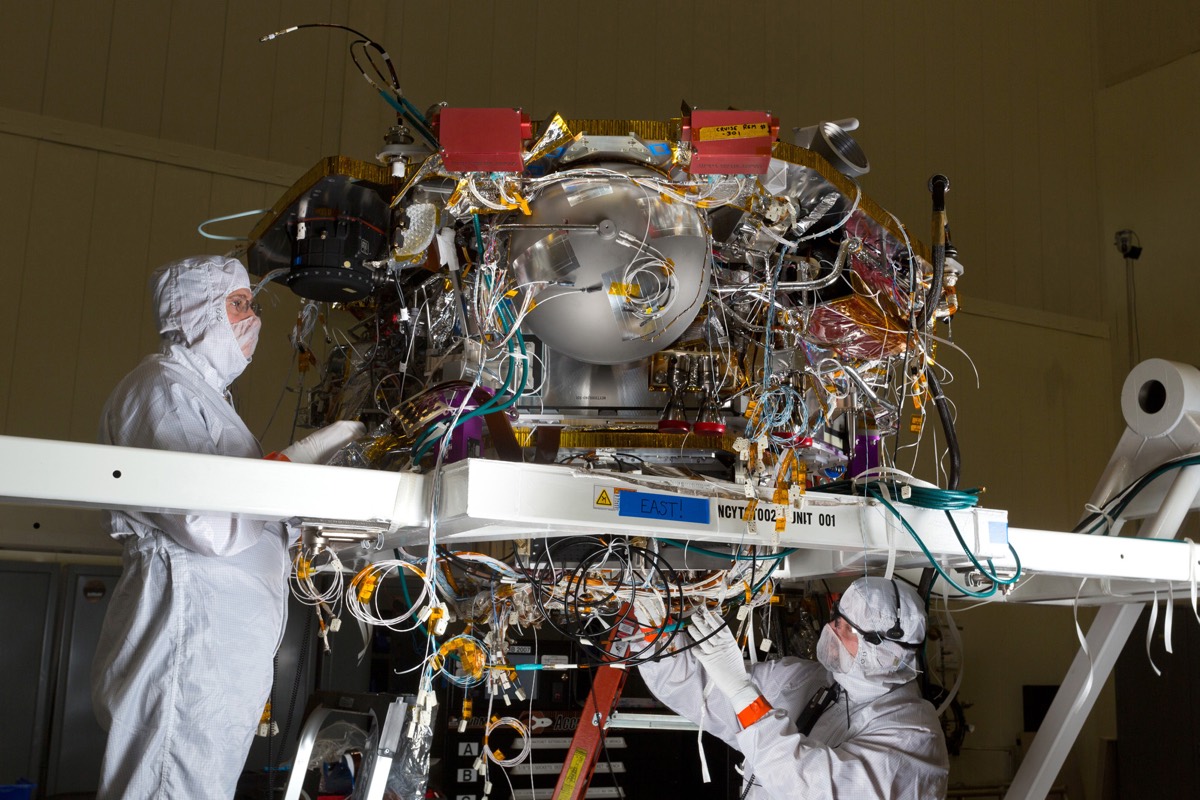
Experts assemble the Mars InSight lander in a clean room in January 2015 at Lockheed Martin Space Systems in Denver.
Full of tricks
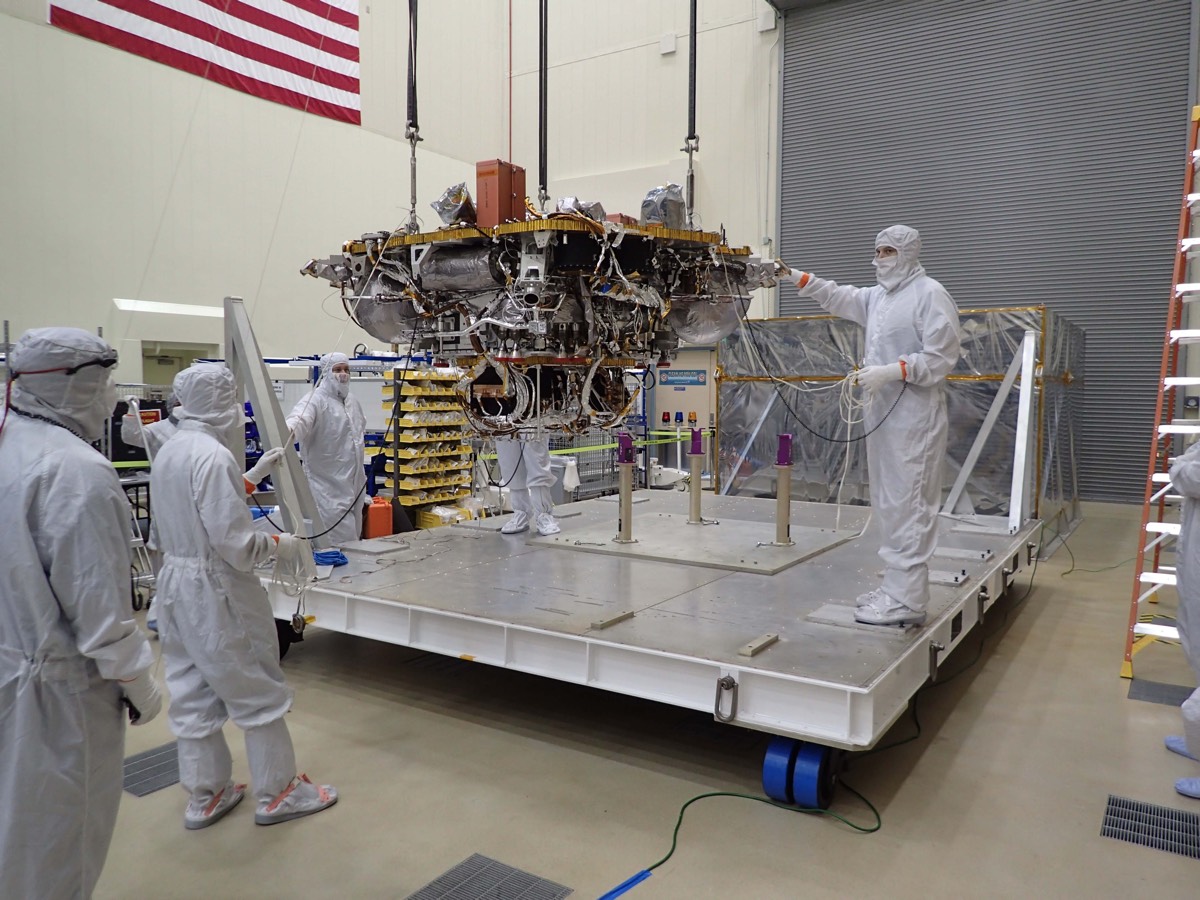
The Mars lander gets lifted from the base of a storage container on June 20, 2017, at Lockheed Martin. The lander's arm (5 feet 9 inches, or 1.8 meters, long) will lift a seismometer and heat-flow probe on the Martian surface, while a camera will reveal 3D views of the landing site and other activities.
Collecting sun rays
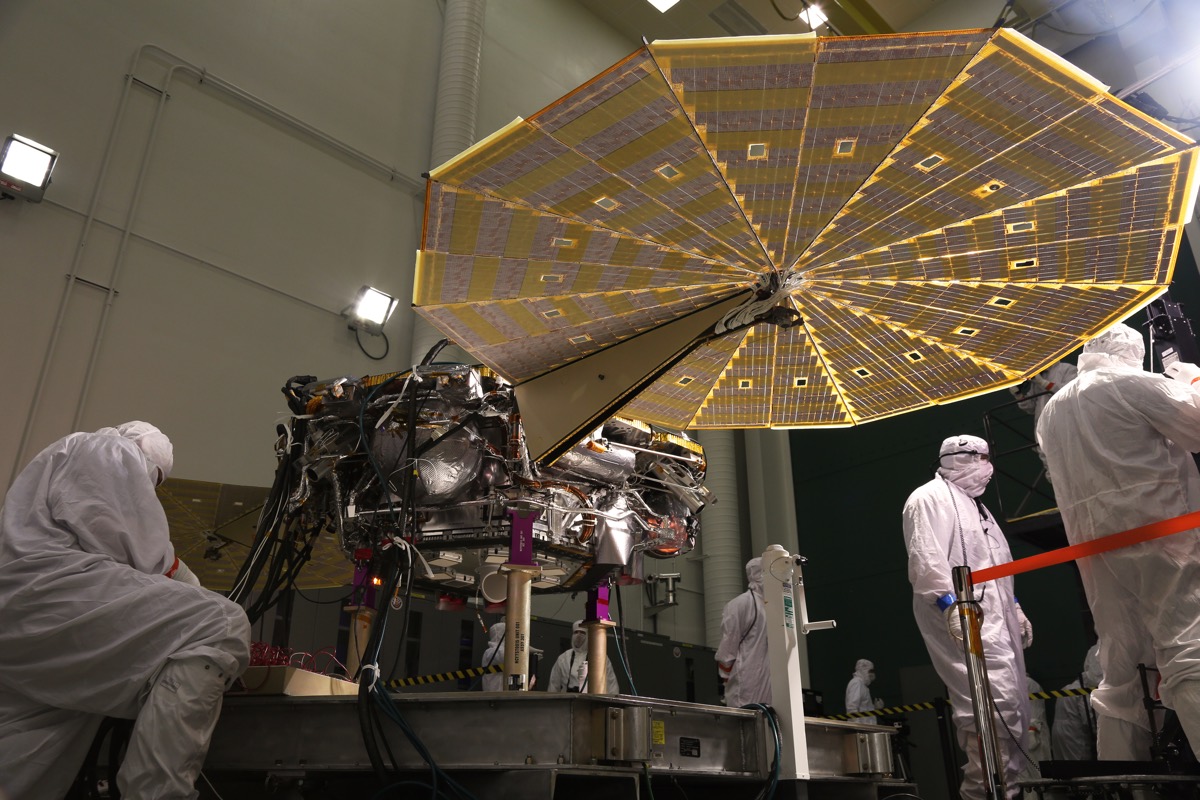
The lander deploys its solar arrays while terra firma to test and verify the process it will go through on the Mars' surface. During the test, which took place on Jan. 23, 2018 in a Lockheed clean room, engineers and technicians watched the deployment to ensure the solar cells were collecting power.
Truck travel
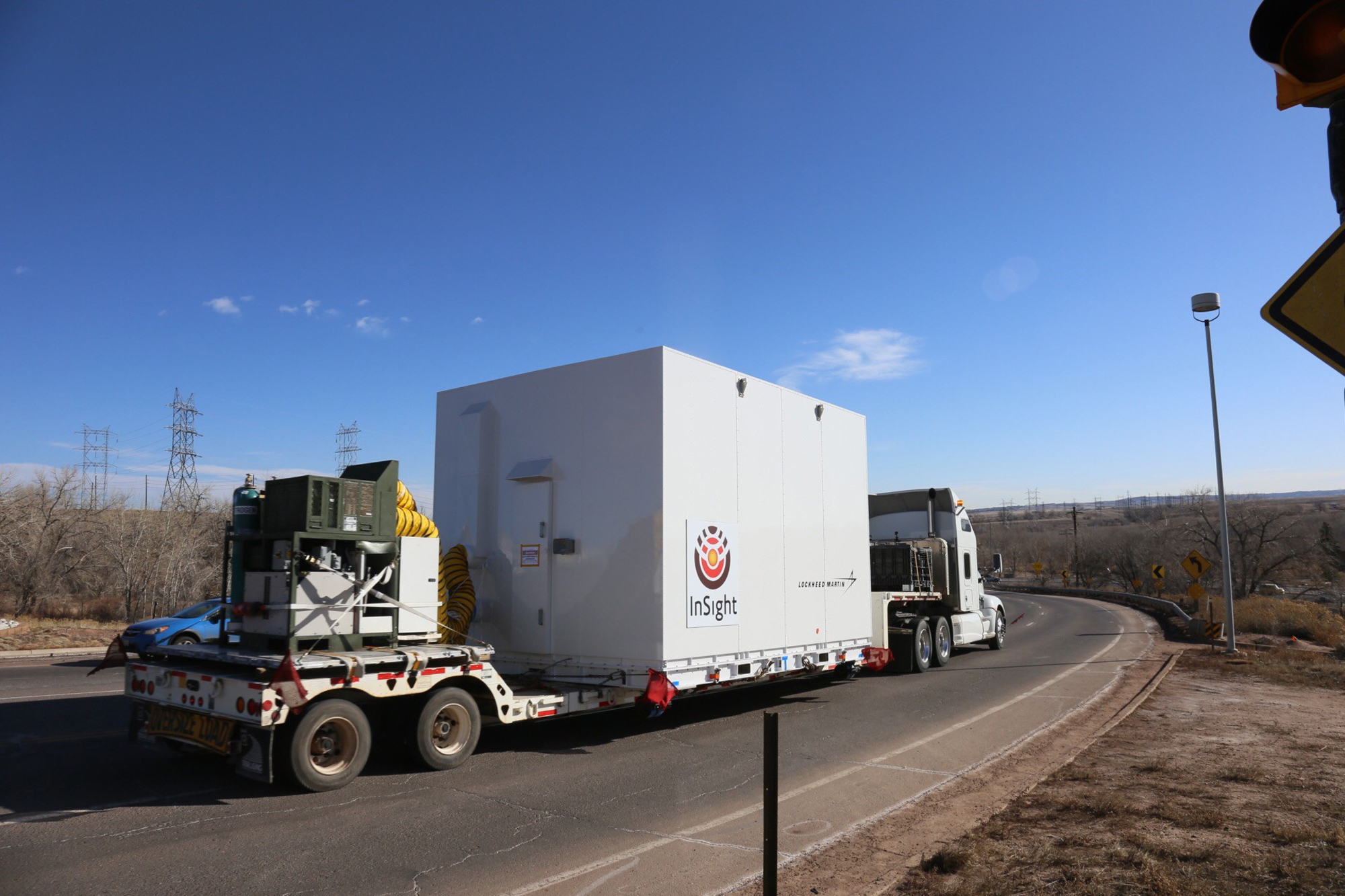
After being built and tested at Lockheed Martin Space in Denver, the InSight spacecraft is carried in a truck on Feb. 28, 2018. Its first stop: Buckley Air Force Base. There, it was loaded into a C-17 cargo aircraft and flown to Vandenberg Air Force Base, California. Next stop: space.
Air travel
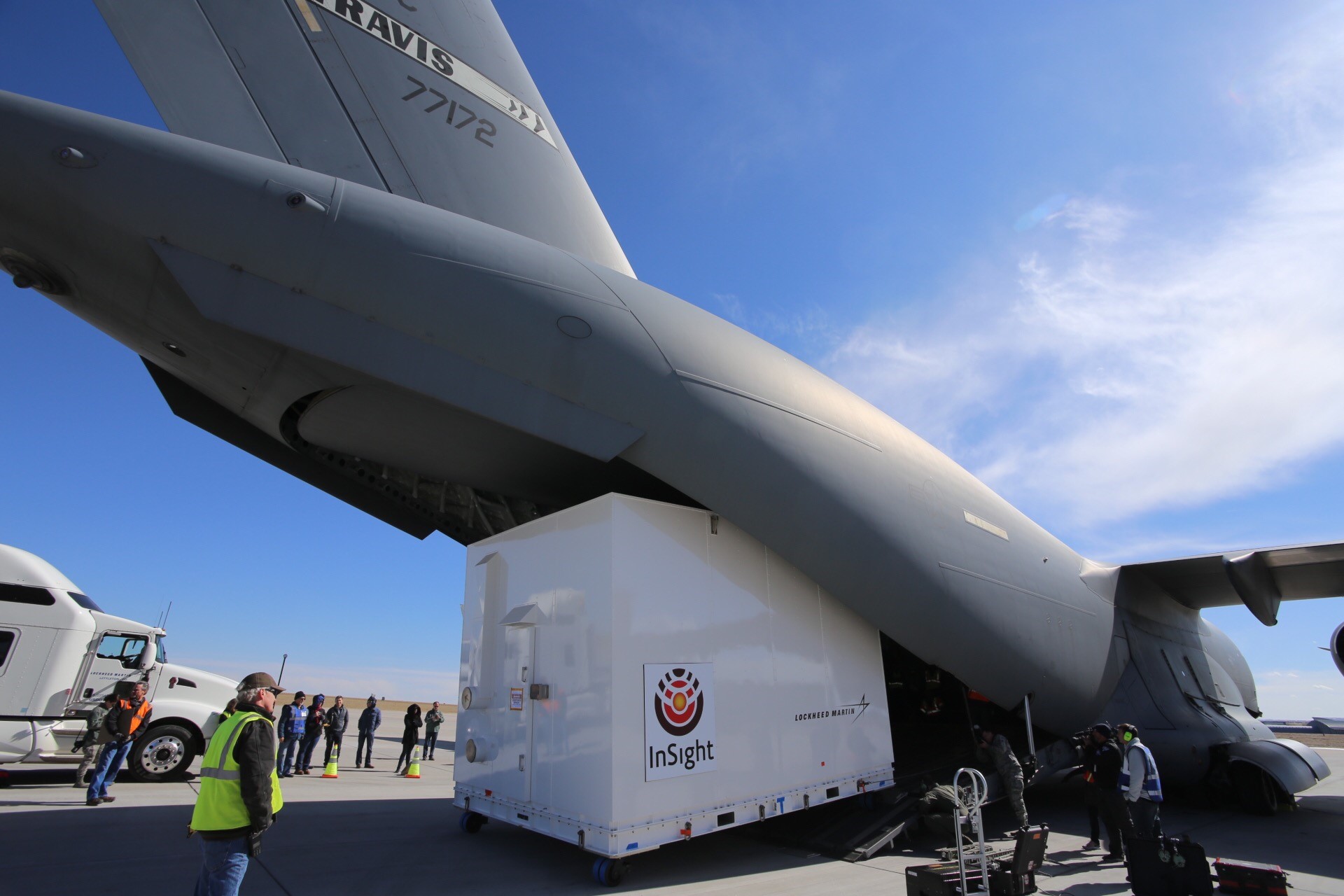
Once the truck arrived at Buckley Air Force Base in Denver, its contents (InSight) were loaded into a C-17 cargo aircraft and flown to California.
MarCo
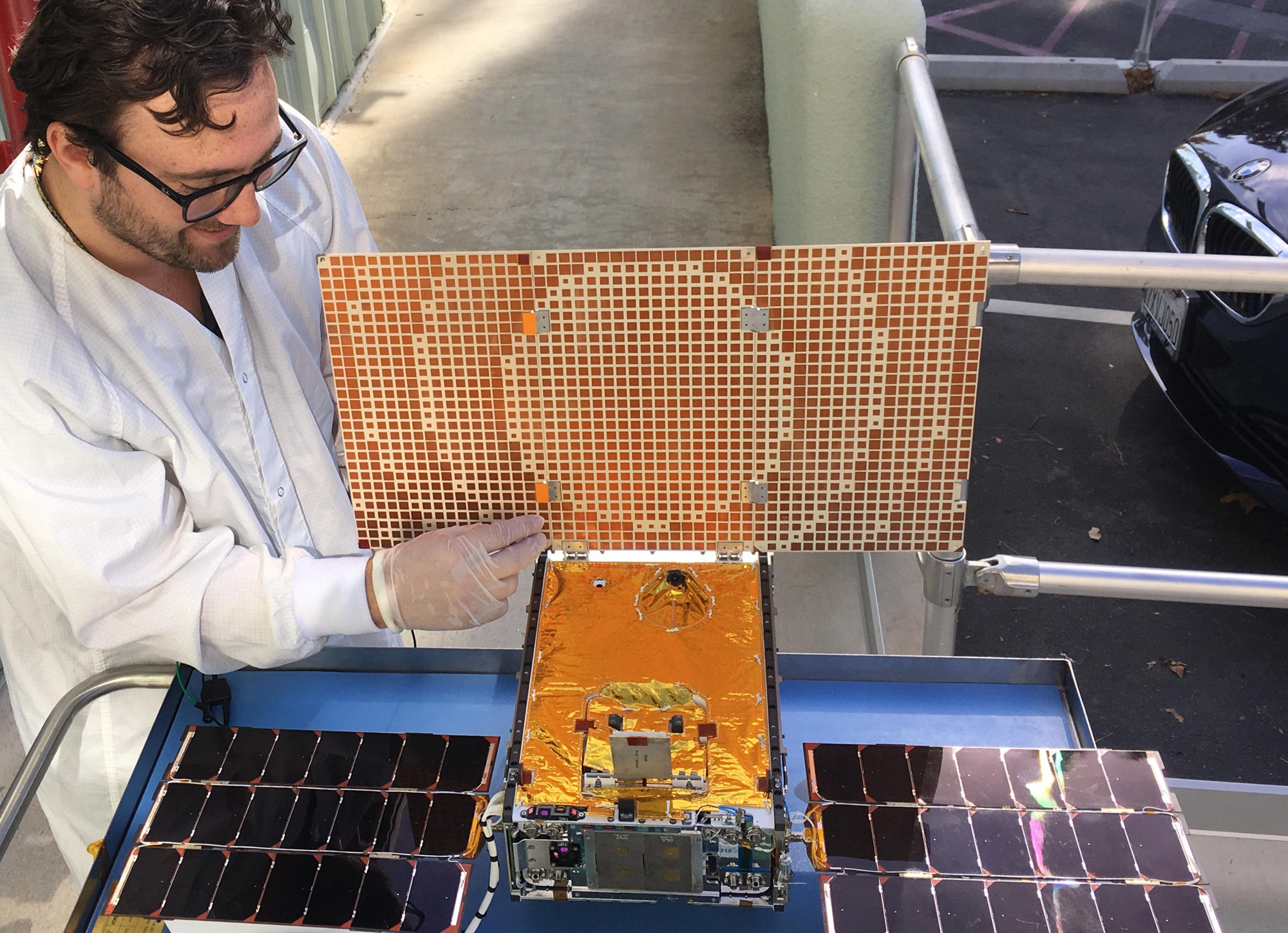
Engineer Joel Steinkraus tests the solar arrays on one of the Mars Cube One (MarCO) spacecraft — called a CubeSat, or a kind of mini-satellite — at NASA's Jet Propulsion Laboratory.
Final Prep
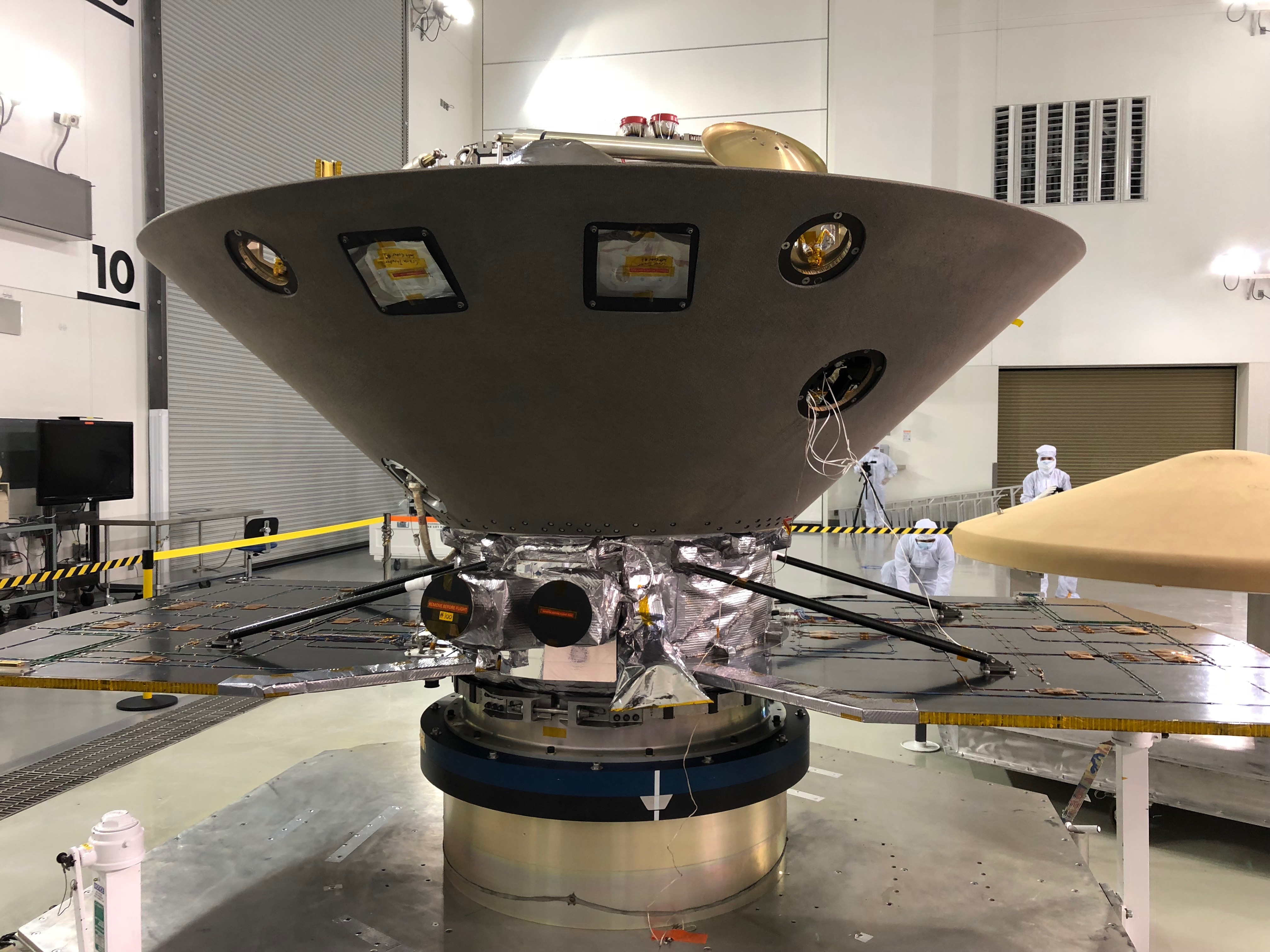
NASA's InSight to Mars undergoes final preparations at Vandenberg Air Force Base in Central California, ahead of its launch.
Payload
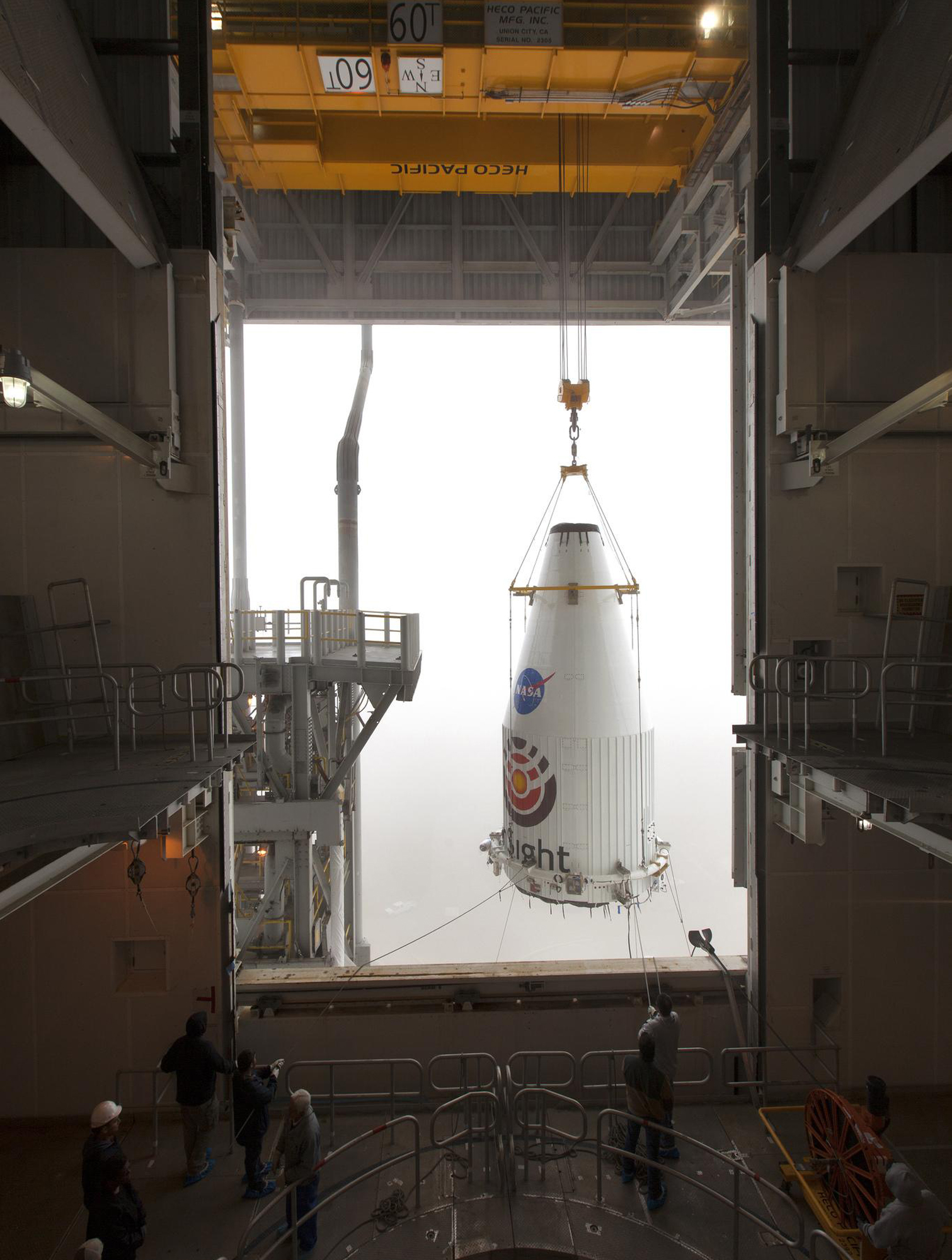
The Atlas V rocket's payload fairing, holding the InSight lander, gets lifted up so that it can be mated to the top of the rocket on May 5, 2018.
Big and Heavy
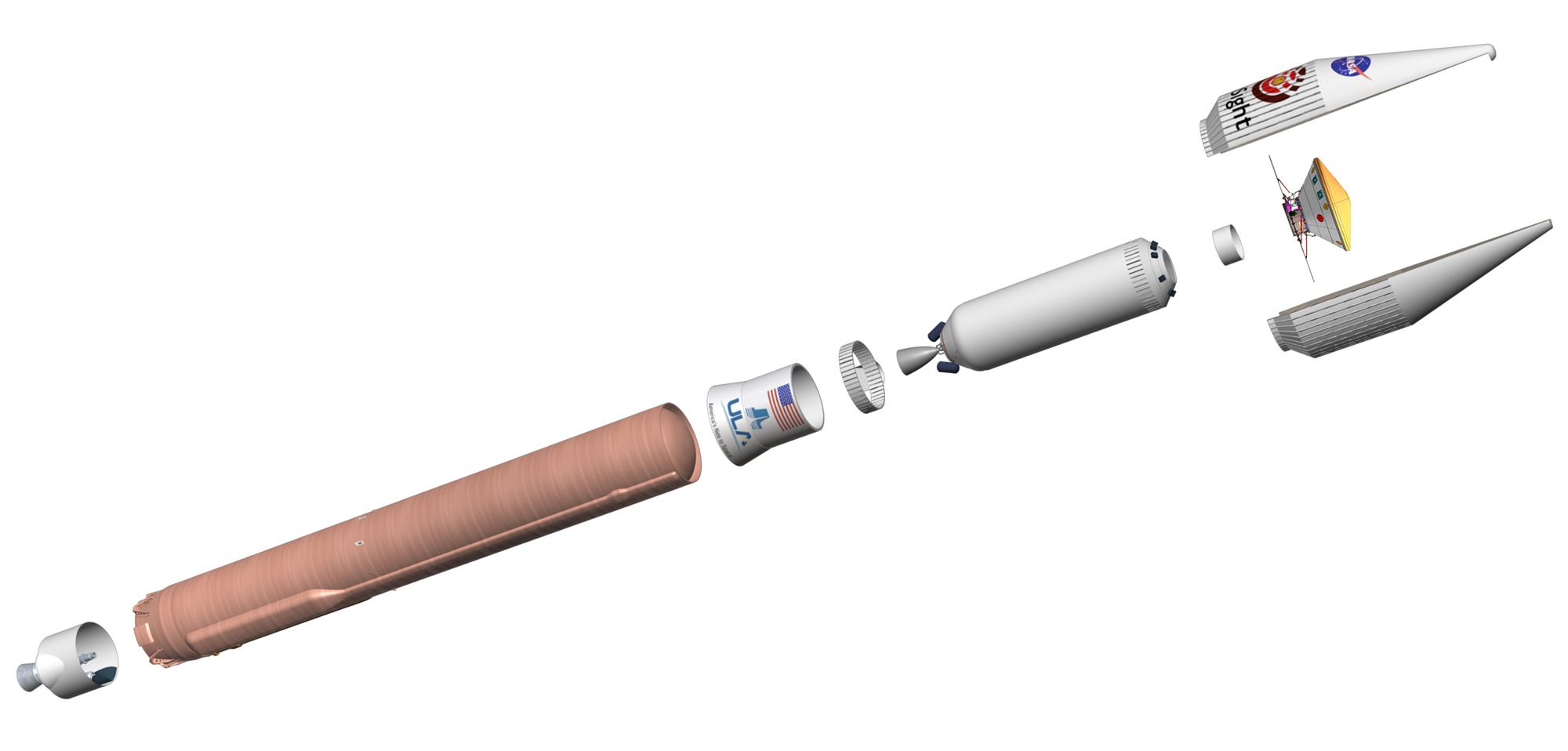
This artist's concept shows parts of the Atlas V-401 launch vehicle — "one of the biggest rockets available for interplanetary flight," NASA reports. The rocket stands at 188 feet (57.3 meters) tall. The rocket, when fully loaded with InSight, weighed about 730,000 pounds (333,000 kilograms), or the equivalent of 14 big rigs, fully loaded with cargo.
Ready for liftoff
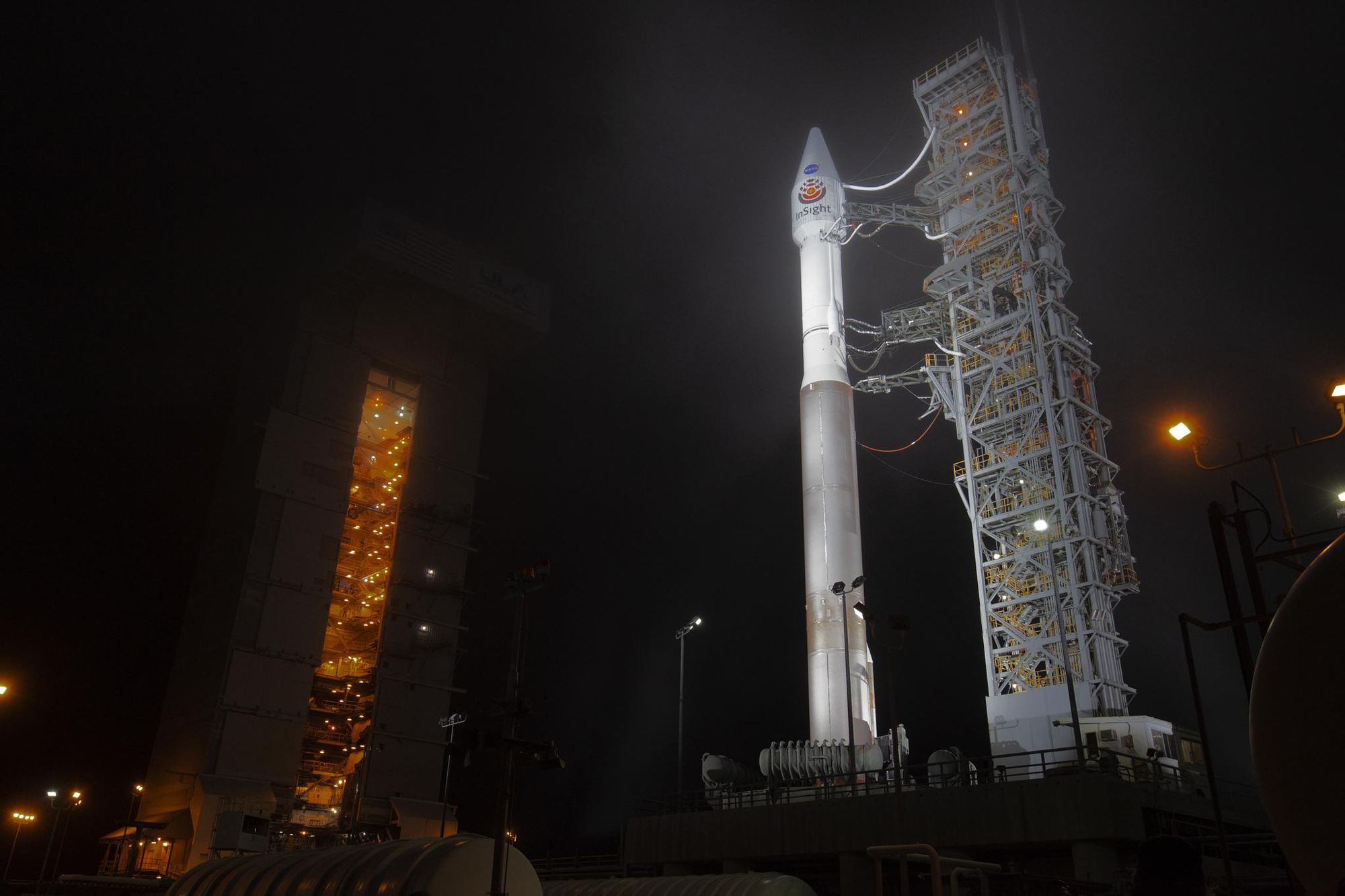
At Space Launch Complex 3, at Vandenberg Air Force Base in California, the gantry rolls back in preparation for the InSight liftoff. The fully stacked rocket stands as tall as a 19-story building.
Sign up for the Live Science daily newsletter now
Get the world’s most fascinating discoveries delivered straight to your inbox.
Jeanna Bryner is managing editor of Scientific American. Previously she was editor in chief of Live Science and, prior to that, an editor at Scholastic's Science World magazine. Bryner has an English degree from Salisbury University, a master's degree in biogeochemistry and environmental sciences from the University of Maryland and a graduate science journalism degree from New York University. She has worked as a biologist in Florida, where she monitored wetlands and did field surveys for endangered species, including the gorgeous Florida Scrub Jay. She also received an ocean sciences journalism fellowship from the Woods Hole Oceanographic Institution. She is a firm believer that science is for everyone and that just about everything can be viewed through the lens of science.










